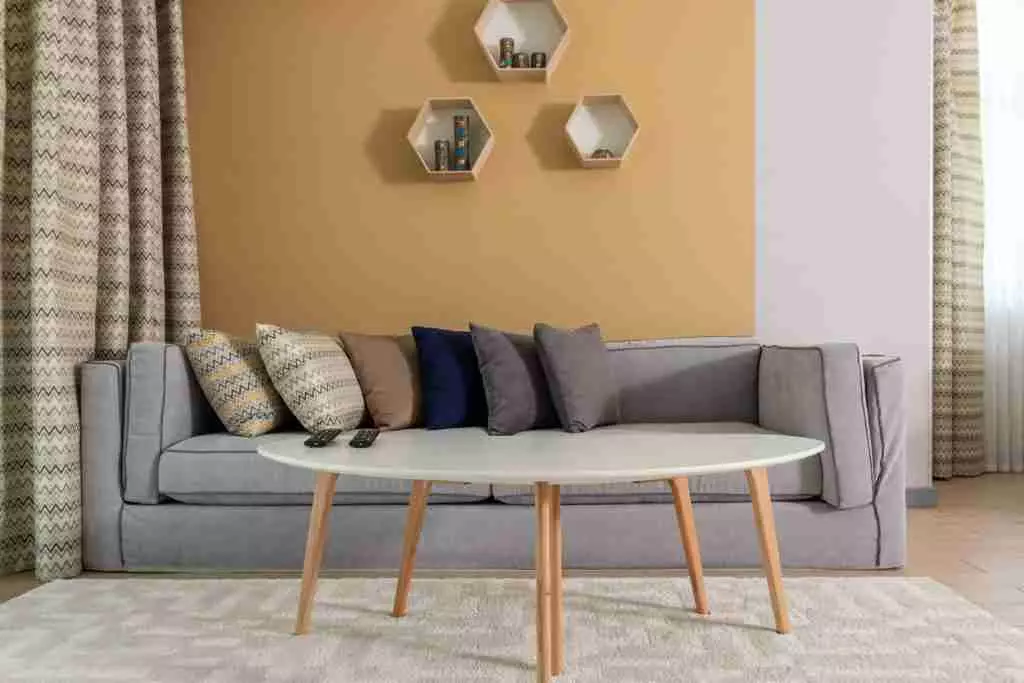Do you long for a clean, natural life in harmony with nature? Japanese minimalism offers a timeless style that can help you achieve just that. Inspired by Buddhism and nature, Japanese minimalism began as a simple tea practice and has since expanded to influence architecture, design, and even fashion.
What Is Japanese Minimalism?
Japanese minimalism is a style rooted in Buddhism, focusing on simplicity, clean living, and utilizing only the essentials. It encourages us to connect with the Earth, be grounded, and create balanced spaces inspired by nature. By incorporating traditional Japanese design principles with a minimalist approach, Japanese minimalism creates serene, uncluttered, and harmonious spaces. But it goes beyond design and extends to various aspects of daily life, appreciating mindfulness and simplicity.
 Image: Buddha statue with mountains
Image: Buddha statue with mountains
The History of Japanese Minimalism
Japanese minimalism originated from Zen philosophy in the early 1900s. It spread throughout Japan, influencing homes, architecture, fashion, design, and art. Beginning with tea bowls and evolving into a meditative masterpiece of minimalism, Japanese minimalism became a way of life.
Areas of Japanese Minimalism
Japanese minimalism started with tea practices but expanded its influence to various areas, including fashion, architecture, design, and art.
Japanese Minimalist Fashion
Japanese minimalist fashion embraces muted palettes and simple silhouettes, focusing on building a wardrobe of basic pieces. Subtlety is key, unlike the bright and loud styles of the 1980s and 1990s. Japanese minimalist fashion emphasizes the correct fit, interesting textiles, and unique finishes.
Japanese Minimalist Architecture
Japanese minimalist architecture embodies grace, decluttering, and simplicity. These buildings and houses are airy, filled with natural light, and connected to nature. Furniture is kept to a minimum and often low to the ground, allowing users to feel grounded. Open floor plans and wide openings create a balance between indoors and outdoors.
 Image: Modern Japanese design
Image: Modern Japanese design
Japanese Minimalist Design
Japanese minimalist design is closely associated with Zen, ancient traditions, and harmony with nature. Natural materials, craftsmanship, and imperfection define this style. Embracing everything as it is helps avoid stress and disappointment, leading to a state of Zen. Open floor plans, simple furnishings, and only the essentials are key features of Japanese minimalist design.
Japanese Minimalist Art
Japanese minimalist art is characterized by its simplicity and depiction of nature. Uncluttered and composed of few brushstrokes, these artworks often feature bold and contrasting colors. Japanese minimalist art embodies the spirit of Zen and a deep connection with nature.
How to Practice Japanese Minimalism at Home
Now that you understand the essence of Japanese minimalism, let's explore some practical ways to bring it into your home and create a soothing and serene environment:
- Neutral colors: Choose soft and neutral colors, such as whites, grays, and cream tones, to create a peaceful and serene atmosphere.
- Declutter: Pare down your decorations and furniture to the bare essentials. Embrace storage solutions to keep your space clean and simple.
- Zen bedroom: Transform your bedroom into a serene sanctuary for relaxation and sleep. Make your bed every day to maintain order and tranquility.
- Incorporate nature: Bring nature indoors by using natural accents like plants and materials such as wood floors. Embrace natural light to create a harmonious ambiance.
- Lines: Emphasize horizontal lines in your home's structure and design to create long, open spaces with a clean look.
- Stay grounded: Utilize low-profile furniture, floor mats for sitting, or even consider no furniture in some spaces to stay connected to the earth.
- Energy: Consider the energy and purpose of each room when designing its look. Creating balance and positive energy flow will contribute to a harmonious home.
 Image: Minimal modern living room
Image: Minimal modern living room
Marie Kondo and Japanese Minimalism
Marie Kondo gained popularity with her simple visual style and the KonMari MethodTM. While not strictly minimalist, her methods resonate with the Japanese minimalist lifestyle. By organizing neglected spaces and keeping items that spark joy, Marie Kondo's approach aligns with the principles of simplicity and decluttering.
Helpful Insights into Japanese Minimalism
To understand Japanese minimalism better, let's explore some related vocabulary:
Did Minimalism Start in Japan?
Minimalism can be traced back to the 12th century in Japan. Art, pottery, Zen Buddhism, and green tea all played a role in shaping the practice of minimalism, emphasizing meditation and being present in the moment.
What Is Zen Minimalism?
Zen minimalism is the practice of simplifying and keeping only the essential. It helps users find balance, peace, and a stronger connection with nature and their own sense of Zen.
What Is Japandi?
Japandi combines Japanese minimalism with Scandinavian functional design elements. It focuses on form, function, clean lines, simplicity, light natural colors, and bright spaces. Emphasizing natural materials and minimal, sustainable pieces, Japandi creates comfort and coziness for your sanctuary.
What Is Wabi Sabi Style?
Wabi-sabi celebrates the value of imperfection and impermanence in nature and natural forms. It embraces a neutral palette, draws inspiration from nature, and appreciates the beauty of knots in wood and wrinkles in fabrics.
The Benefits of Living a Japanese Minimalist Life From Real People
I asked family and friends to rank the benefits of living a Japanese minimalist lifestyle. Here are the top 5 benefits they identified:
- Calmer Mind
- Fresh, Open Spaces
- Less to Clean
- Saving Money by Owning Less
- Feeling More Free
Conclusion
Japanese minimalism offers a beautiful way to declutter, organize, and create harmony in your living space. By embracing this style, you can connect with nature and achieve a sense of personal Zen. So why not give it a try? Begin your journey towards a clean, uncluttered, and serene home and life today.
Note: This article is based on the original content and has been enriched with additional insights while retaining the core message.
















